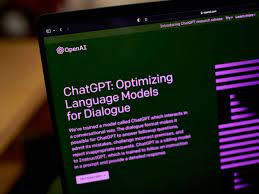What is ChatGPT?
ChatGPT is an advanced language model developed by OpenAI. It is part of the GPT-3.5 family of models, which stands for "Generative Pre-trained Transformer 3.5." ChatGPT is designed to generate human-like responses in natural language conversations and has been trained on a vast amount of text data from the internet.
The underlying architecture of ChatGPT is based on the Transformer model, which has revolutionized the field of natural language processing. Transformers use a self-attention mechanism to capture relationships between words in a sentence and have achieved state-of-the-art performance on a wide range of language tasks.
ChatGPT can be seen as an application of the Transformer model to conversational AI. It has been fine-tuned specifically for generating coherent and contextually relevant responses in a conversation. The training process involves exposing the model to a large dataset of example conversations, where it learns to predict the next word or phrase based on the context of the conversation.
One of the key features of ChatGPT is its ability to understand and generate human-like responses. It can comprehend and generate text in multiple languages, and it can handle a wide variety of conversational topics. ChatGPT can engage in meaningful and coherent exchanges, providing information, answering questions, and even displaying a sense of humor in its responses.
However, it is important to note that ChatGPT has certain limitations. While it is designed to mimic human conversation, it is still an artificial intelligence and lacks true understanding or consciousness. It can sometimes produce incorrect or nonsensical responses, especially when faced with ambiguous or misleading inputs. Additionally, ChatGPT may sometimes exhibit biases present in the training data, as it learns from the patterns and biases in the text it has been exposed to.
OpenAI has made efforts to address these limitations by incorporating safety mitigations and moderation systems. For example, they have implemented a Moderation API that can warn or block certain types of unsafe or inappropriate content. OpenAI also encourages user feedback to help improve the system and address potential biases or shortcomings.
ChatGPT has a wide range of potential applications. It can be used as a virtual assistant, providing information and assistance in various domains. It can support customer service interactions, help with language translation, and even act as a language tutor. It can also be integrated into chatbots or other conversational interfaces to enhance the user experience.
The development of ChatGPT builds upon the advancements in natural language processing and machine learning research. OpenAI's GPT-3, released in 2020, was a major breakthrough in language modeling and set new benchmarks in terms of model size and performance. It demonstrated the potential of large-scale language models for generating high-quality text in a variety of contexts.
However, building and training such advanced models like ChatGPT is computationally expensive and requires significant computational resources. Training a model like GPT-3 or ChatGPT involves running complex algorithms on powerful hardware, often requiring specialized infrastructure or cloud computing services.
As AI models like ChatGPT continue to evolve, there are ongoing discussions and debates surrounding ethical considerations and potential risks. These include concerns about the misuse of AI for spreading misinformation, generating harmful content, or impersonating humans. OpenAI, as the developer of ChatGPT, has emphasized the importance of responsible AI use and aims to strike a balance between enabling powerful AI capabilities and ensuring safety and ethical considerations.
In conclusion, ChatGPT is a remarkable example of the application of advanced language models to conversational AI. It leverages the power of the Transformer architecture and large-scale training data to generate human-like responses in natural language conversations. While it has limitations and challenges, it showcases the potential of AI in simulating human conversation and has a wide range of practical applications in various domains.











comment here guys
ReplyDelete